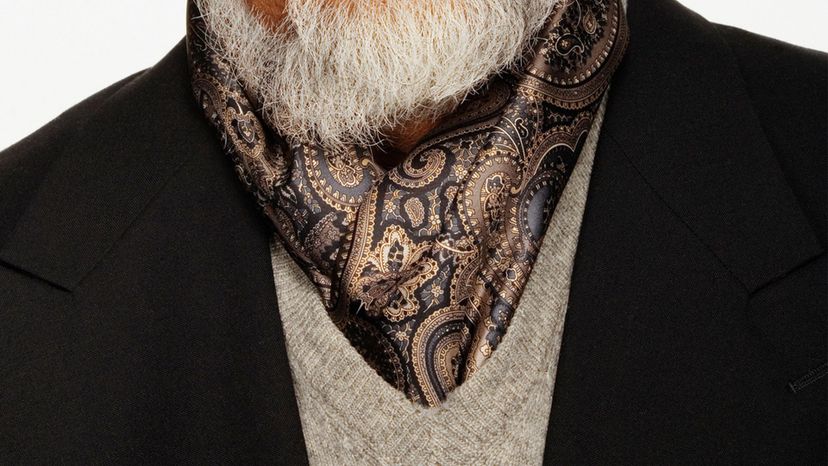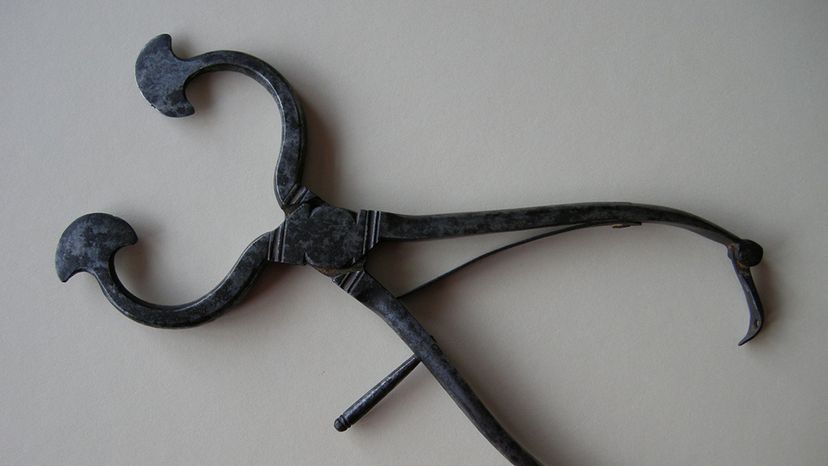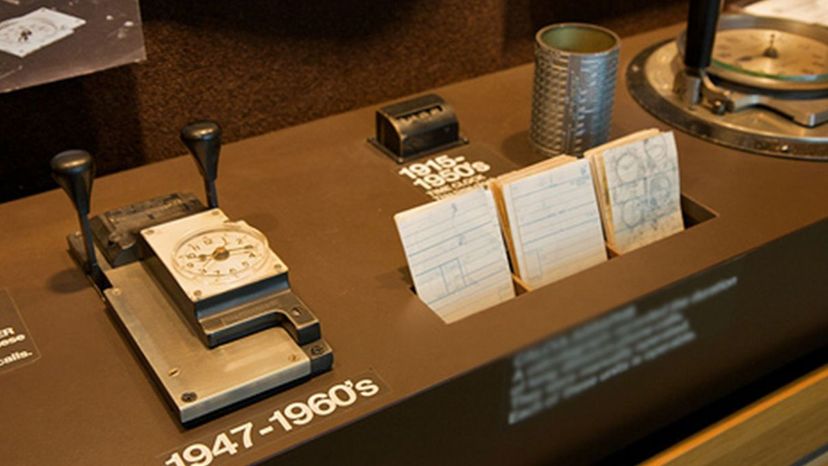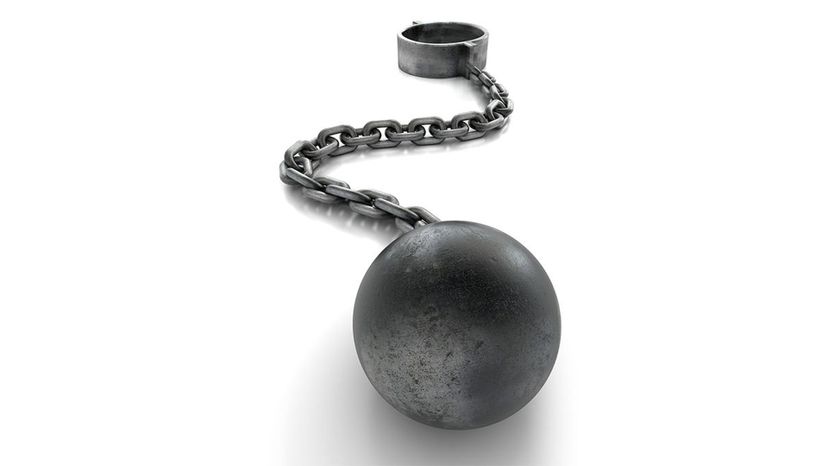
About This Quiz
We are the things we do, and as the preeminent users of tools on Planet Earth we have done some very strange things indeed! The usage of tools is what defines us as a people, and we have crafted an enormous array of different devices in order to suit our manifold needs. Need to wash your sheets? We have a tool for that. Serve up some stuff to a party? We have a tool for that. Keep the meat a'roastin'? We have a tool for that, too! And as our technological understanding has grown, so too have our tools changed and mutated to meet both our new needs and our strange new knowledge.
The old stuff that seemed so important to our day to day living, gets left behind. As the years wind on, what once was familiar and commonplace now seems weird, unwieldy, and even humorous. Why did we ever need Boom Boxes again? What exactly was the point of Betamax video cassettes? We stuck our feet in *what* at the shoe store??
...But you know the answers to all of these questions, don't you? Or do you? In this quiz, you will find dozens of esoteric technologies, lost to the ages, but here to test your knowledge. We have hints to help you along, but ultimately success or failure will be in your hands. Are you up to the challenge?

This is an example of a phone booth, an object that once lined the streets of nearly all major metropolises in the western world. You needed a dime and one of these to call home!

CD-ROMs were a storage medium for data. They could hold images, computer programs, audio, you name it! Data is stored by using microscopic indentations on the plastic shell, which are then read using a laser. Don't scratch it!

Compact cassette tapes were a popular method of storing audio data. Invented by Phillips in 1963, it uses magnetic film spooled over a plastic "cassette." When you got to the end of the tape, you needed to manually rewind it! Better not get stuck!
Advertisement

The Cravat is a flowing neckband that was the predecessor of the modern necktie. It dates back to the 17th century, and may have originated as a piece of armor placed around the throat!

The Fax machine was a method of transferring documents over long distances. Large and cumbersome, it has now been completely eclipsed by e-mail, and now stands only as a monument to a less connected past.

The Walkman is a lightweight, personal tape player that originally debuted for around $150 in Japan. It granted users the ability to listen to their own music privately, a thing that had been essentially unheard of!
Advertisement

The Telegraph has a permanent place in the history of communications, as it is the first ever example of electronic telecommunications. It used electric pulses to send signals over wire for long distances, and the pulses would in turn be translated into alphanumeric characters. This turned the world upside down!

The key to the typewriter is the use of a machine to imprint- with the push of a button- a letter or similar character onto an ink ribbon, after which it is applied to paper. The keyboard you use now was first used in these machines, back in 1874!

The Flash-Lamp was a tube containing explosive powder, whose purpose was to create a bright flash prior to a photograph. That seems pretty excessive by modern standards...watch out for red eyes!
Advertisement

The mimeograph was the simple forerunner of the photocopier. You create a stencil, and then force ink through it to make copies! An elegant technology to solve an old problem, and inexpensive besides, but it was, of course, overtaken by the copiers we have today.

The Dalli Box Iron used its own brand of "smokeless fuel" briquettes so as to avoid the smoke associated with charcoal. They would, in theory, provide an ironed garment without the stains or odor that could come from smoke.

The Sugar Nipper was a tonged device designed for picking up cubes of sugar- with sugar relatively rarer, its careful measurement was important. It was also strong enough to break up cubes of the sugar, making it useful for cooking, too.
Advertisement

The Butter Churn was used in order to make butter- cream was placed into it, and the constant churning would separate out the buttermilk from the butter itself. It was tough work, and, of course, you had to milk the cow first!

The Washing Dolly, and many objects like it, were used to essentially brutalize large loads of laundry that were submerged in soapy water. It would spin them around and get them good and soaked so as to make sure the entire load was cleaned. This was arduous work, and has happily been taken over by the washing machine!

We think of beer as being a cold drink, but people in earlier eras had different ideas. This beer warmer was meant to keep your brew nice and toasty on a winter's eve- often it would be ready and waiting for you when you got home!
Advertisement

Candles were too expensive for everyone to own, but most everyone needed some method of seeing when the light grew dim. Rush Dips were meant to hold rushes dipped in tallow or grease and lit to provide some minimal, albeit pungent, lighting.

Snuff Boxes could either be small, and capable of fitting in one's pocket or be meant for table usage and used for parties or other substantial groups of people. The Snuff itself was, of course, an extremely dangerous habit, which fortunately is not in fashion today.

The Knitting Sheath is a basic device meant to aid in knitting. If used properly, it allows the knitter to do their work while in motion, or alternately to knit using only a single hand! We think of knitting as a hobby today, but prior to the advent of the sewing machine and mass production, it was a vital domestic chore.
Advertisement

The tinderbox was often the first object used on any cold winter's morning. The tinder within was set afire, and then a match was used to transfer that fire to the stove or hearth. The box would then be covered, smothering the embers and saving the rest of the tinder inside for the next day.

The cherry pitter does just what it says on the tin- they were a tool for removing the pit from a cherry aimed at leaving the delicate fruit intact. A novelty, but in practice, it probably didn't actually save much effort!

Prior to the invention of vacuums, rugs had to be physically removed from a household, hung up (usually on lines) and beaten with a Rug Beater in order to be cleaned. A great deal of work averted, thanks to modern technology!
Advertisement

The Sewing Bird was a sewing accessory. The beak could open and clamp down on fabric while you worked, and there was a space for spare pins near the tail feathers. It was meant to add a bit of a decorative touch to sewing, which was frequently a daily activity.

The sadiron was a particular kind of iron, often sold in pairs, that was pointed at both ends and had a removable handle. It was meant to be warmed on the stove rather than the hearth, eliminating the concern of soot ruining clothing.

The pager was a simple communication device that could send a text message or a beeping notification to the wearer. A forerunner of many smartphone functions, it was often used by doctors and other professionals who needed to be summoned at a moment's notice.
Advertisement

The dial-up modem used telephone wires to transmit and receive information. It could be interrupted by accessing the house phone, so be careful to stay off the line when using the internet!

The Phonebook's purpose was to collect the various phone numbers of goods providers, services, and even private individuals and make them available to consumers. Nowadays the former are more easily available, but we tend to be a little more private about our personal phone numbers.

The Slide Projector was a method of showing individual image frames. It was usually used as a record of a family excursion, like a trip to the beach or Disney World. You would look at each frame individually as it was projected on the wall.
Advertisement

The Atari 2600 was the first home video game system to see a real penetration of the American market. It saw great success, but video games seemed like a fad after subpar quality control caused a massive, industry-wide crash in the '80s.

The Water Clock is an ancient technological answer to the question of keeping time: drops of water fall into a device made to measure time based on the accumulated water level. Simple, elegant, and not a little wet.

The Slide Rule is a multi-purpose mathematical tool used for multiplication, division, logarithms, and trigonometry. It has, of course, been rendered obsolete by the multiple forms of handheld electronic computing we have available to us!
Advertisement

Artistic, as well as functional, an hourglass is a device by which sand falls through a thin-necked glass in order to measure time. The classic measurement for such a device is one hour, but it can be marked or grooved as necessary for finer gradation.

A Calculagraph is a simple but useful innovation- a combination of a clock with a precision gear mechanism to measure distinct periods of time. It was used for things like employees clocking in or professionals measuring time spent working on the clock.

The Sundial is an ancient technological innovation: the position of the sun in the sky is related to the time of day, so shadows cast by the sun can be used to determine the time. Hence, the sundial is simply a device that measures those cast shadows.
Advertisement

These old-style magazine or newspaper racks were suitable for a time when such periodicals were the major way of keeping up with the events of the day. They could be placed here in a particular order to suit the busy reader. Today we just visit our bookmarks or queue up a podcast and go!

The Bosun's Whistle is an artifact of a time when signals from such devices were used to relay quick orders to the Royal Navy. It is ultimately an enhancement of that old Kindergarten trick: one, two, three, eyes on me!

We think of salt and pepper shakers as having a particular oblong appearance with a flat head, but that isn't necessarily so! Victorian designs had many potential shapes other than the one that eventually "won" out.
Advertisement

The Ball & Chain was an awkward solution to the problem of prisoners frequently escaping their cells: it is a literal ball of heavy, weighted iron and a chain connecting it to the ankle of the hapless prisoner, greatly limiting their movement. A grim reminder of times past.

The tuning fork is a two-pronged piece of metal designed to oscillate at a particular frequency when struck. Its major purpose is to give a baseline from which a musician can more easily tune an instrument.

The shoe-fitting fluoroscope was a piece of now unused technology. It would unnecessarily expose the feet to radiation for the amusement of patrons- and even worse, some of the radiation would scatter everywhere. This would cause damage to tissue and could cause cancers to form.
Advertisement